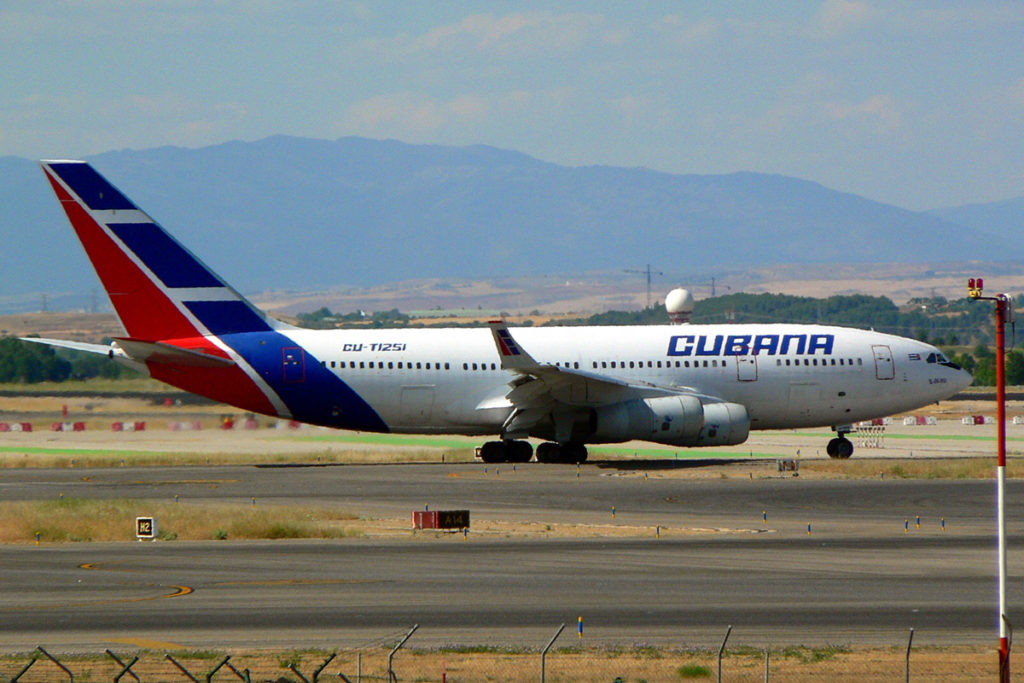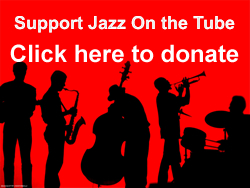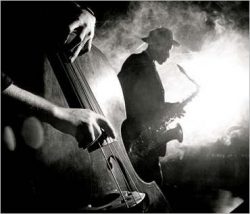Blog, Cuba, Travel to Cuba

It’s kind of hard to get somewhere where there are no scheduled flights.
Charter flights to Cuba have existed for a while, but as anyone who has used them knows, the process is kind of a pain and expensive ($500 for the hour long flight from Miami.)
Now six US airlines have been approved by the Department of Transportation for up to 155 round trip flights per week. They’ll fly from five U.S. cities to nine cities in Cuba other than Havana.
The airlines are: American, Frontier, JetBlue, Silver Airways, Southwest and Sun Country.
US airports involved: Miami, Chicago, Philadelphia, Minneapolis and Fort Lauderdale, Florida.
Cuban airports involved: Camaguey, Cayo Coco, Cayo Largo, Cienfuegos, Holguin, Manzanillo, Matanzas, Santa Clara and Santiago de Cuba.
(The richest prize – routes to Havana – is expected to be announced this later summer.)
Service may start as early as this fall and early winter, just in time for winter tourist season.
The Cuban government still has to sign off on the details of the plan, but the general principle of direct flights from the US has already been agreed to by the two governments.
Cuba here we come!
If you’re interested in Cuba and music and jazz in Cuba make sure you sign up for Ken’s low volume Cuba list. Use this link or the box below: KensCubaList.com
– Ken McCarthy
Jazz on the Tube
P.S. Our unique programming is made possible by help from people like you. Learn how you can contribute to our efforts here: Support Jazz on the Tube
Thanks.
Afro-Cuban culture, Blog, Cuba, Cuban Jazz, Latin Jazz
TECHNICAL NOTE: It’s not your eyes. This is an hazy, old piece of video.
It’s one of the great mysteries of music history.
Israel López Valdés (“Cachao”) was born in September 14, 1918 in Havana, Cuba.
Less than a month later, Jimmy Blanton was born on October 5, 1918 in Chatanooga, Tennessee. He died at twenty-four on July 30, 1942.
Before these two giants came along, no one played the bass this way. Cachao in Cuba and Blanton in the US completely revolutionized the instrument.
Blanton opened the doors for people like Charles Mingus, Ray Brown, Paul Chambers, and so many other great artists and Cachao changed the sound of Latin music.
Did they know each other? Did they ever have occasion to hear each other’s music?
From my analysis, while it’s possible, both artists had already created their respective styles before their recordings would have made it to each other’s countries.
What stars were in the sky when these two were born?
The interview video was copied off TV in Miami on the 1990s. Thanks goodness someone had the presence of mind to interview Cachao and thanks to Rick Camara for posting it.
Now Cachao in action…
Cachao & Paquito D’Rivera
– Ken McCarthy
Jazz on the Tube
P.S. Our unique programming is made possible by help from people like you. Learn how you can contribute to our efforts here: Support Jazz on the Tube
Thanks.
Afro-Cuban culture, Blog, Cuba, Cuban Jazz, Latin Jazz, Video and audio
“Irakere” is a Yoruban word that means virgin forest, a wild place unspoiled by civilization.
Tracking this band, its history, evolution and personnel changes would take a web site all by itself.
A short version of their story:
Jazz was not smiled upon by the government in Cuba in the 60s and 70s. The powers that be felt it smacked of imperialism and capitalism.
However, in order to cater to visitors and their expectations, the government underwrote a group called Orquesta Cubana de Música Modern that played American music.
In 1973, members of the Orquesta broke away to form Irakere. The founders included pianist Chucho Valdés, saxophonist Paquito D’Rivera, trumpet player Jorge Varona, guitarist Carlos Emilio Morales, bassist Carlos del Puerto, drummer Bernardo García, and percussionist and singer Oscar Valdés II.
In 1977, the group performed at two “Iron Curtain” festivals, the Belgrade Jazz Festival and the Warsaw Jazz Jamboree where they had the chance to meet Betty Carter, Mel Lewis and Thad Jones.
Later that year Dizzy Gillespie, Stan Getz, Earl Hines and other American musicians visited Cuba on a “jazz cruise,” the first time jazz musicians visited Cuba since the break in diplomatic and trade relations in 1961. Gillespie and Getz jammed with the members of the band.
In 1980 with Gillespie’s help, the group won spots on at the Newport Jazz Festival in New York City and the Montreux Jazz Festival in Switzerland and their international career was launched.
The recordings of those shows were packaged by both CBS Records (JC-35655) and EGREM (Areíto LD-3769) and won the Grammy in the 22nd Annual Grammy Awards for Best Latin recording.
The concert above was recorded at the Capital Theater in Jersey City, New Jersey on March 23, 1979 in the middle of their commercial break out.
(Make sure you watch through to the end when the group takes the music right into the audience.)
Personnel:
Carlos del Puerto, bass
Carlos Morales, electric guitar
Enrique Pla, drums
Jorge Alfonso El Niño, conga drums
Oscar Valdés, vocal and Cuban percussion
Armando Cuervo, vocal and Cuban percussion
Jorge Varona, trumpet, flugelhorn and vocal
Arturo Sandoval, trumpet, flugelhorn, valve trombone, vocal, arranger
Paquito D’Rivera, flute, alto sax, soprano sax, baritone sax, arranger
Carlo Averoff, soprano sax, tenor sax, flue, piccolo
Chucho Valdés, arranger, composer, keyboards, band leader
We have two more videos from this period.
One from Venezuelan television which we believe was recorded in 1979.
We also have one from 1977 when many of the cats were still in their twenties.
From Venezuelan television – c. 1979
Personnel:
Arturo Sandoval, trumpet
Jorge Varona, trumpet and vocals
Chucho Valdés, keyboards
Carlos Averhoff, saxophone
Carlos del Puerto, bass
Enrique Pla, timbales
Jorge Alfonso El Niño, conga drums, vocals
Armando Cuervo, percussion and vocals
Oscar Valdés, percussionist and vocals
Paquito D’Rivera, not on this recording
Filmed in 1977
– Ken McCarthy
Jazz on the Tube
P.S. Our unique programming is made possible by help from people like you. Learn how you can contribute to our efforts here: Support Jazz on the Tube
Thanks.
Afro-Cuban culture, Blog, Cuba, Video and audio
This program is part of a series of radio documentaries on the musical culture of Cuba produced by Ned Sublette, author of “Cuba and Its Music”, for AfroPop Worldwide.
The program is built around the work of Dr. Ivor Miller, the only scholar to have gained access both to the Abakua society in Cuba, a social phenomenon unique to Havana and Matanzas, and to the mother culture in present-day Nigeria and southwestern Cameroon.
Interwoven with the conversation with Miller, Ned offers examples of how Abakua members continuously influenced the development of popular Cuban music.
Here are the original notes from the program:
The leopard cult of ekpe in Calabar, in present-day Nigeria and southwestern Cameroon, has one of the most unique performance traditions in all of Africa–a complex theatrical tradition, referred to in calabar English as “play,” which encompasses a cycle of sacred dramas that takes many years to execute.
The music of this society is almost completely unknown outside the region, because it was not recorded until the 1980s.. This program will feature Calabar-themed recordings by artists including Sexteto Habanero, Chano Pozo, Arsenio Rodriguez, and Los Munequitos de Matanzas.
– Ken McCarthy
Jazz on the Tube
P.S. Our unique programming is made possible by help from people like you. Learn how you can contribute to our efforts here: Support Jazz on the Tube
Thanks.
Blog, Cuba, Cuban Jazz, Latin Jazz, Video and audio
This one-camera, no-edits video was shot by Al Carmona (Albert P. Camona) at the The University of the Arts of Cuba / Instituto Superior de Arte (ISA) and posted to YouTube in 2006.
ISA was founded September 1, 1976, by the Cuban government as the national school for the arts.
The soloists are:
Jorge Vistel (trumpet)
Regis Molina is described in the YouTube notes as playing “alto sax”, but since the primary saxophone in this performance is a baritone, I’m going to guess that the author meant baritone sax.
The composition “Moanin'” is by Charles Mingus and first appeared on the album “Blues and Roots” recorded on February 4, 1959 at Atlantic Studios in New York City.
– Ken McCarthy
Jazz on the Tube
P.S. Our unique programming is made possible by help from people like you. Learn how you can contribute to our efforts here: Support Jazz on the Tube
Thanks.
Blog, Cuba, The Cuba-US connection, Video and audio
WKZE’s Susan Shaw, host of “Saturday Gumbo”, interviews me about the secret Cuban roots of rock and roll.
– Ken McCarthy
Jazz on the Tube
P.S. Our unique programming is made possible by help from people like you. Learn how you can contribute to our efforts here: Support Jazz on the Tube
Thanks.



